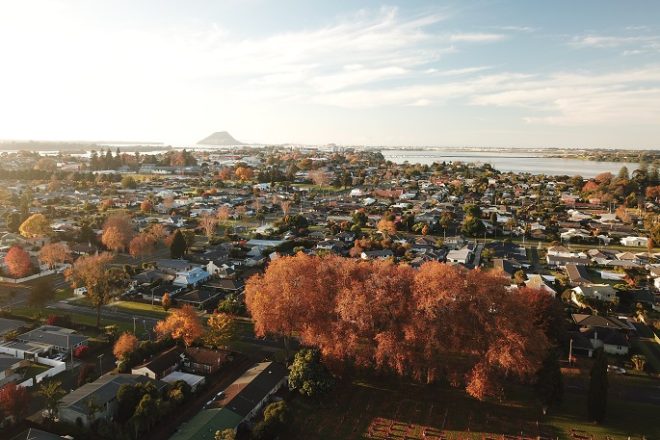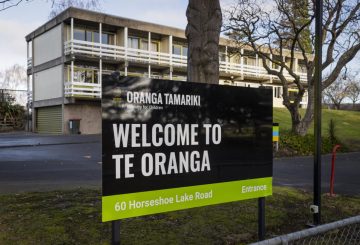Musim gugur di Tauranga sangat menakjubkan, dengan pepohonan menampilkan nuansa kuning, emas, dan oranye yang cerah di langit biru jernih. Pembaca SunLive telah memperhatikan lapisan daun tebal menutupi jalanan pada bulan Mei. Ini adalah pengingat yang baik bagi semua orang untuk memeriksa dan membersihkan talang atap, semburan, dan saluran air hujan sebelum curah hujan musim dingin untuk mencegahnya tersumbat oleh daun.
Musim gugur di Selandia Baru dikenal karena warnanya yang indah, terutama di Pulau Selatan. Namun, Tauranga juga telah memamerkan musim gugurnya yang menakjubkan dari McLaren Falls Park ke berbagai pinggiran kota seperti Greerton dan Bethlehem.
Jatuhnya daun dan buah dari tanaman, yang dikenal sebagai absisi, biasanya terjadi pada musim gugur ketika suhu turun, hari-hari menjadi lebih pendek, atau ketika tanaman stres karena kekeringan. Saat klorofil rusak, pigmen lain di daun menjadi terlihat, menyebabkan daun berubah warna. Warna-warna paling terang terlihat ketika siang pendek dan malam dingin tetapi tidak membeku.
Dewan Kota Tauranga telah bekerja keras untuk membuat peta dan model bahaya banjir untuk memprediksi daerah yang paling terpengaruh oleh hujan lebat dan badai. Penduduk dapat membantu mencegah banjir dengan menjaga saluran air dan talang bersih dan melaporkan penyumbatan apa pun kepada dewan.
Jika hujan lebat diperkirakan, staf dewan kota akan memeriksa dan membersihkan puing-puing dari lebih dari 100 kisi air hujan di 60 lokasi di seluruh kota. Selama badai, semua panggilan dari publik direkam dan permintaan bantuan untuk membersihkan saluran dikirim ke kontraktor. Setelah badai, kisi dan outlet diperiksa dan dibersihkan lagi.
Warga dapat membantu komunitas mereka dengan secara teratur memeriksa pipa pembuangan mereka dan membersihkan dedaunan dan puing-puing sebelum hujan lebat. Jika ada penyumbatan di saluran pembuangan pribadi, itu adalah tanggung jawab penduduk untuk menghubungi kontraktor drainase swasta. Jika ada kekhawatiran tentang daun yang menghalangi jalan, warga dapat mengingatkan dewan dengan menelepon 07 577 7000.
Daun musim gugur dapat digunakan di kebun atau untuk proyek kerajinan setelah jatuh. Mereka dapat memperbaiki struktur tanah dan retensi air, menarik organisme yang meningkatkan kesehatan tanah, dan dapat digunakan sebagai mulsa untuk melindungi tanaman, menekan gulma, mempertahankan kelembaban tanah, dan melindungi cacing. Daun juga dapat ditambahkan ke tempat sampah kompos atau digunakan untuk kerajinan dan karya seni musim dingin anak-anak.






























































